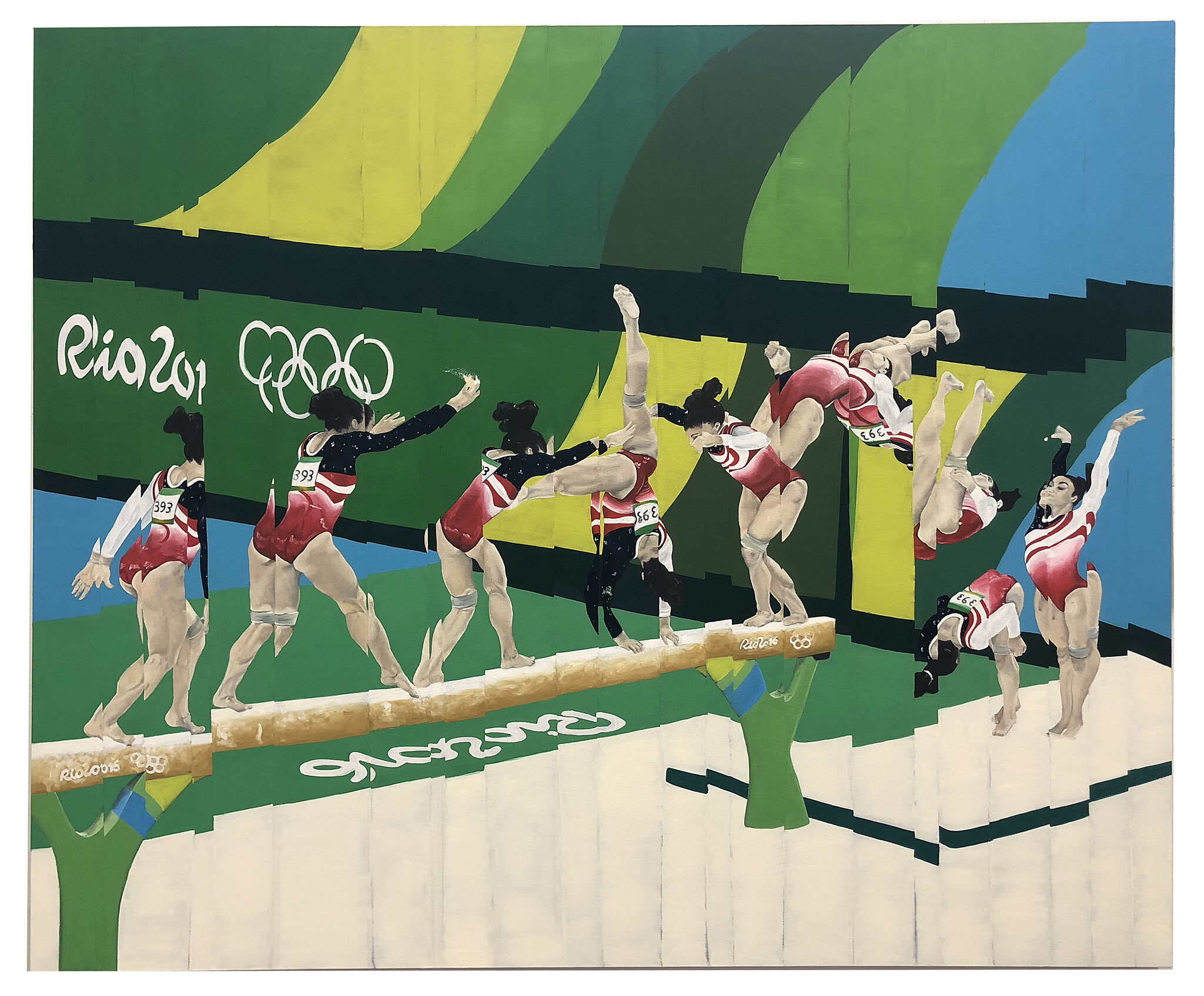Whitney Biennial 2019 | Art & Artists
May 17–Oct 27, 2019
Whitney Biennial 2019 | Art & Artists
Jeanette Mundt
57
Floor 5
Born 1982 in Princeton, NJ
Lives in Somerset, NJ
Jeanette Mundt based her paintings on New York Times photo composites of the members of the 2016 gold medal–winning U.S. women’s Olympic gymnastics team, combining multiple images of the moments that solidified their victories. Alluding to Eadweard Muybridge’s nineteenth-century motion studies—which captured simple human and animal movements through series of consecutive photographs—Mundt renders the gymnasts’ routines as a sequence of successive frames condensed into a single composition, fragmenting their bodies as they tumble and flip through the air. By disrupting the regimented temporality of the original photos in this way, she hints at the complex systems—nationalist, sexist, and technocratic—underpinning the Olympics, the sport of gymnastics, and the media covering them. Not long after Mundt began this series, which she continues to work on, news broke that the USA Gymnastics national team doctor sexually abused many young gymnasts, including the women who appear here.
Born Athlete American: Laurie Hernandez I, 2018
-
0:00
Jeanette Mundt
0:00
Narrator: Jeanette Mundt based these paintings on photo composites of the 2016 United States Women’s Olympics gymnastics team.
Jeanette Mundt: In the photo composites, the body sort of fades in and out so that you can see the moments that the illustrator really wanted to highlight. So you see this automation. The New York Times does this a lot―uses graphics and techno fetishistic modes of communicating―so that people end up in this hyper-digitized space.
Narrator: Across the canvases, Mundt has fractured and abstracted the scenes in a variety of ways.
Jeanette Mundt: I can break up these segments to be less defined units of time, break it all up and make time sort of completely under my control. In some of the images I just took segments out entirely, so you have these stutterings, and this sort of tripping over yourselves and going back and forth, and the gesture becomes this stutter. And this I thought was a really great way to think about time and movement formally in painting, which is also what I want to speak about. But then also visually immediately show that there's a failure here in this extreme attempt at success.
Narrator: Mundt began these paintings before the official doctor of the Olympic Gymnastics team, Larry Nasser, was accused and convicted of sexually abusing many of the athletes—including Simone Biles and Aly Raisman, pictured here. Mundt is very aware that these events impact viewers’ perceptions of the paintings.
Jeanette Mundt: I'm trying to navigate how you bring in iconic images and play with what the audience has in their mind already, and compliment that rather than direct it. I do appreciate that the story, the media, the spectacle, all of that, changed shape and moved into this terrible place. It was already there, but it became public in that the paintings also change, and that as a viewer, you can recognize both of those things together.

